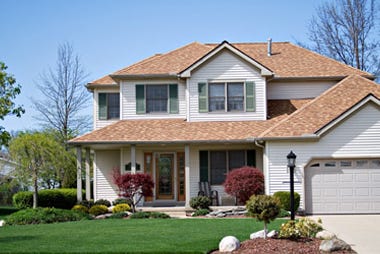One of the major choices that homebuyers face is whether to buy a new home or one that has been previously owned and lived in. You may want to consider the following factors before making any decisions. (See also: Should You Buy or Build a Home?)
Planning and Design Flexibility
New homes, which include owner-built properties, provide greater flexibility and customization options. Buyers who start from scratch by purchasing land and building a house can have complete control over the planning, design and finishing of the home, which provides the greatest degree of flexibility and customization.
Pre-planned homes that are sold by builders and developers also allow you to be involved in many aspects of the planning and design phases. Depending on the stage of development, you may be able to choose from a variety of floor plans, exterior finishes, flooring options, paint colors, bathroom fixtures, lighting fixtures, kitchen appliances and the like. Often, pre-planned homes are sold with a choice of "package" options, such as a standard package that would provide basic features, or a premium package that would include upgrades in materials (such as superior siding) and/or features such as hardwood floors and gourmet kitchens.
If you buy a previously owned home, you’ll lose this flexibility since these homes are sold as is. You can certainly customize a pre-owned home to better suit your needs and preferences, but these renovations, additions and upgrades can be costly and inconvenient. Still, some buyers enjoy the work and creativity that goes into fixing up a home, and not all buyers would consider renovations an inconvenience. (For more, see: Buying a Home: Brand New vs. Fixer-Upper.)
Layout
The layout of a home is often a deciding factor in home selection. Buyers frequently have a layout style in mind when looking for a home, whether it's a large, open floor plan or a home with distinct and separate living spaces. Today's newer homes reflect current trends in layouts, including larger kitchen/dining areas, high ceilings, larger closets and more bathrooms (especially multiple ensuites).
Older homes may suffer from functional obsolescence and have outdated layout, design and style features. For example, many older homes lack the "flow" that modern homes have, making it difficult to get from one room to the next. In addition, older homes may have only one bathroom – regardless of the number of bedrooms – as well as very small closets.
Many of these outdated features served early occupants well. Homes with small rooms and low ceilings, for example, were easy to heat. Southern homes built with no hallways allowed air to circulate directly from room to room, making these homes easier to cool. Central heat and air – and other modern conveniences – may make such features no longer functional or desirable.
Maintenance
People who buy new homes often do so with the intention of avoiding time-consuming upkeep and costly repairs. New homes should be free of the structural defects – such as leaky roofs and cracking foundations – that are common in older homes. Of course, all homes need routine maintenance, but a new home shouldn’t require any major work for a number of years. (For more, see: 11 Hidden Costs of Owning a Home.)
While older homes do require more time and attention, many buyers feel the extra effort is worth it to be in a home with more charm than many newer homes can offer. This old-home charm comes from features like arched doorways, bay windows, dual-sided fireplaces, original plank flooring, vintage glass doorknobs, carved wood balustrades, real plaster wallsq and decorative trim that some homebuyers find desirable.
Safety and Building Codes
Newly built homes must conform to the most up-to-date building codes that apply to the area. Building codes are regulations established by state and local governments that set forth the structural requirements for a building. New homes will have approved electrical systems, plumbing, and fire-safety and natural-disaster protection (such as hurricane-resistant glass) that help ensure the safety of the occupants.
Older homes, on the other hand, may have obsolete systems, including outdated wiring that may require repairs or replacing, and outlets that are not fitted with a ground-fault circuit interrupter (a GFCI, which automatically cuts off the power supply if an appliance comes in contact with water). If you need to update a system, such as the wiring, it can be a long and costly process – and, unfortunately, doing so may “open a can of worms” if you find other problems. Bottom line here: It pays to do a comprehensive inspection before buying an older house. (See also: Home Improvements That Require Permits.)
Environmental Hazards
More and more new homes are constructed using "green" materials and processes to lessen the environmental impact and to limit the occupants' exposure to hazards. While brand-new homes can still contain some hazards (such as the formaldehyde in some cabinetry), older homes often have a number of elements that need remediation to protect those living in the home from health problems. Known hazards include:
- Radon: A naturally occurring gas that usually enters the home through cracks in the foundation.
- Lead pipes: common in homes built before the late 1940s.
- Lead-based paint: common in homes built prior to 1978.
- Asbestos: formerly used to insulate furnaces and boilers, as well as the water pipes leading to radiators. Also used in vinyl floor coverings and in certain siding and roofing materials.
Federal law requires home sellers to provide buyers with lead-based paint information and disclosures if the home was built prior to 1978. (For related reading, see: 10 Questions You Should Ask a Home Seller.)
Warranty
Builders frequently provide warranties on brand-new homes that cover any defects in the home's construction. Many states require new-home warranties that can last up to 10 years in certain cases. This provides a great deal of peace of mind for new-home buyers who know they won’t have to pay for any major repairs during the warranty period. Buyers should know, however, that warranties are limited – they don’t cover every defect that might occur. (For more, see: Do You Need a Home Warranty?)
And even new homes can come with problems. For example, in 2001 to 2009 buyers of thousands of new homes in multiple states ended up with drywall made in China that gave off volatile chemicals and sulfur-based gases that caused respiratory problems and damaged copper pipes, wiring and silver jewelry, among other damage.
Homebuyers' Walkthrough: Considerations When Buying a Home
-
 Investing
InvestingBuying A Home: New Or Previously Owned?
Brand-new homes have distinct advantages - and drawbacks. Find out what you need to know to make an informed decision. -
 Investing
InvestingShould You Buy or Build a Home?
You're ready for a new house. Should you buy it or build it? Here's how to think through the pros and cons, whether it's your first home or your fifth. -
 Investing
Investing5 Real Estate Fears That Keep You From Buying
Don't let these concerns stop you from owning your own home. Learn how to overcome common home-buying fears and feel confident in signing your mortgage. -
 Investing
Investing5 Expensive (And Unexpected) Things That Can Happen To Your Home
These perils can put a dent in the value of one of your biggest assets. Find out how to prevent them. -
 Tech
TechHow Smart Home Systems Affect Home Values
Smartphone-operated lighting and blinds, personalized locking systems, intelligent thermostats...do these amenities pay off when it comes time to sell? -
 Investing
InvestingThe True Costs of Buying Vs. Renting a Home
The full costs of renting versus buying a home, particularly a high-end one, may come as a surprise. -
 Investing
InvestingTop tips for first-time home buyers
Are you deciding on buying your first home? Follow this step-by-step guide to make your homeownership dreams a reality. -
 Personal Finance
Personal FinanceWhat to Look for in a Starter Home
Buying real estate is always a game of compromises, but there are certain things you should never settle for. -
 Managing Wealth
Managing WealthBuying a House? 6 Other Costs You Should Factor In
When purchasing a home, you need to factor in more than just the list price of the home. From closing costs to maintenance, there are many other expenses.



